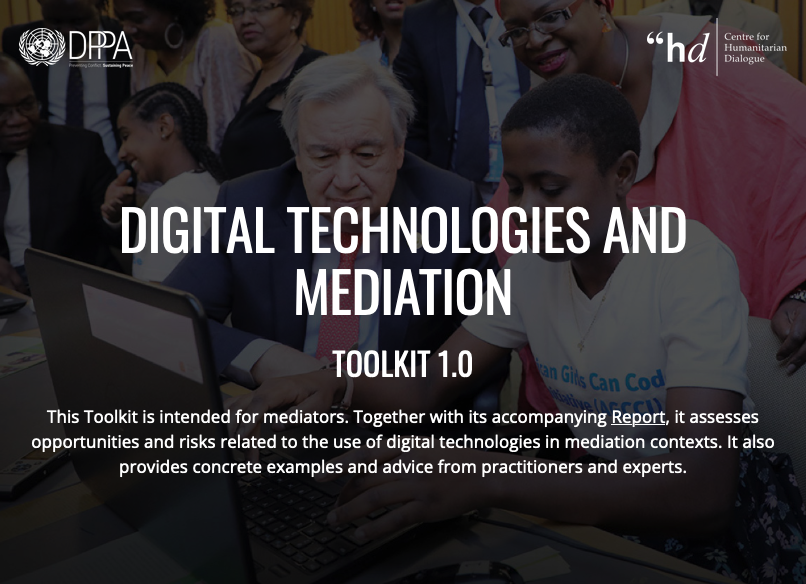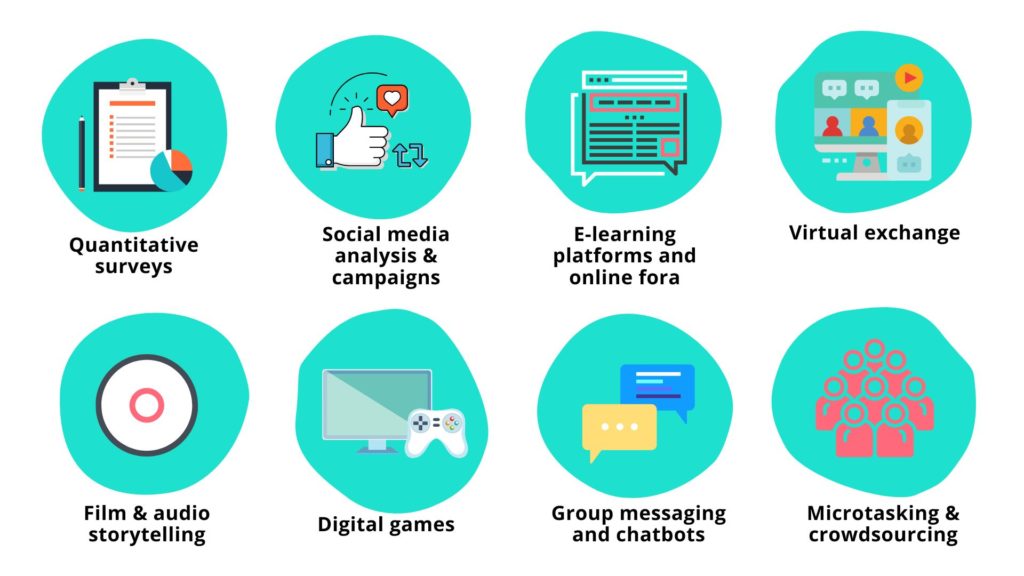This section explores specific digital technologies that can be used to enhance inclusion in mediation processes. Specifically, we ask you to explore three key resources to get ideas and inspiration from what technologies others are using, and how.
Warning: some of these guides contain very detailed information. You may want to read them once through and then return to each as a resource later on.
1. Toolkit on Digital technologies and mediation
First, we invite you to visit the website of the Toolkit on Digital technologies and mediation to review a short description of six technologies identified there, namely: social media, geographic information systems, data analytics, machine learning, virtual reality and blockchain.
2. Technology for Peace Overview
Second, we invite you to click through the number icons in this overview of digital tools and methods that peacebuilders and peacemakers have used across different contexts, namely: surveys, social media, e-learning, virtual exchange, film and audio, games, group messaging, and crowdsourcing.
3. The Digital Peacebuilders Guide
Finally, this comprehensive guide features almost thirty digital peacebuilding approaches, from digital dialogue to virtual reality and many more in between. Explore the guide either by a need or goal you have, or use the menu to see the full list of approaches.
Each of these resources offer a different angle and approach towards digital technologies used for peace, but they each contribute to sharing how innovation is already present in mediation adjacent and peacebuilding processes today. What new ideas did they spark for you? Do you have anything else you now want to return and add to our collaborative brainstorm (click previous page to go back)?



